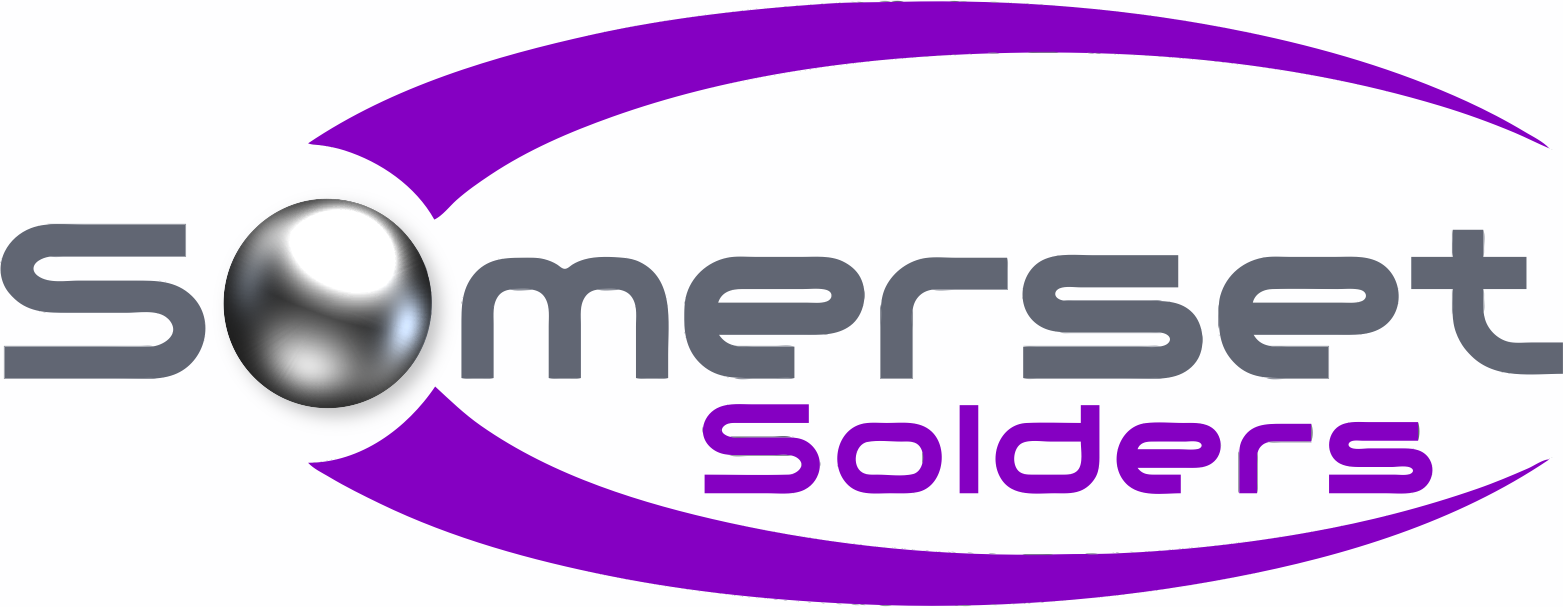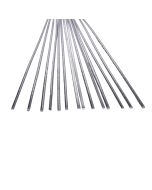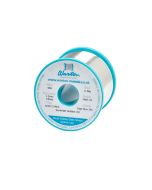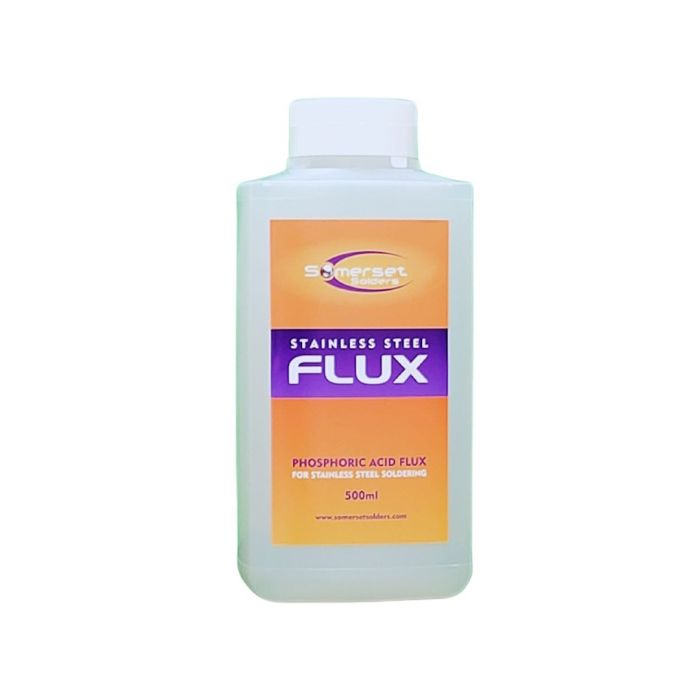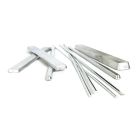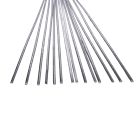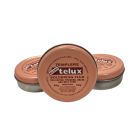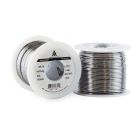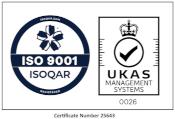Trying to solder stainless steel and having problems? Use the correct flux, Phosphoric Acid flux, and get excellent solder joints.
- Promotes good wetting of surfaces
- Handy 500ml bottles in stock
- See British Stainless Steel Association link
SAFETY DATASHEET FOR PHOSPHORIC ACID
When soldering stainless steel which solder can be used?
Conventional Tin Lead solders can be used for soldering of stainless steel, as well as a high Tin solder such as the Lead Free 99C alloy. It is recommended that the Tin content is greater than 50% to give good bond strength.
What solders are available?
We stock a 60% Tin 40% Lead blowpipe solder (grade K). Blowpipe are thin sticks of solder approximately 5mm in diameter and 500mm in length. We also stock the Summit Solder range from AIM Solders and the 99C Lead Free on 250g and 500g reels would be suitable and give a good colour match.
Should the flux residues be removed and if so how?
Yes removing of the residues is important. As the flux is acid based removal will prevent discolouration of the metal and any further corrosion. Warm soapy water does the trick.
Next Day
Service available. Cut-off by 12.30pmSpecial Courier
Shipment of LiquidCollect in Store
Click & CollectA 75% Phosphoric Acid flux available from Somerset Solders designed to aid the soldering of metals such as Stainless Steel and Nickel Chromium where tough oxide layers are present. Phosphoric Acid, recommended by the British Stainless Steel Association, allows wetting of the metal surfaces where Zinc Chloride and Rosin based fluxes would be ineffective.
https://bssa.org.uk/bssa_articles/soldering-stainless-steels/
For Stainless Steel and Nickel Chromium soldering
Promotes excellent wetting
Supplied in a 500ml bottle
Easy residue removal in warm soapy water
| Brand | AIM Solders |
|---|---|
| Customise | No |
| Collect in Store | Yes |
| Specification |
|
| MPN | F051 |
FAQ - Frequently Asked Questions
Welcome to Somerset Solders FAQs. Here you will find answers to our most asked questions. Still cannot find what you're looking for, or have something we should know? Send us an email - we're happy to help.
-
Q1: Do you ship to my country?
A1: We send orders to many destinations around the World. Some products, such as liquids or very heavy items, we may not be able to dispatch outside of the UK. You can see which countries we ship to in the drop-down list at the checkout stage or by visiting our UK delivery and International delivery pages.
-
Q2: How much do I pay for shipping?
A2: The shipping charge will be added to your order and visible on your receipt before you check out. The shipping charge is based on what products are being ordered and the destination country. See our page for UK delivery charges and International delivery charges.
-
Q3: What are the accepted payment methods?
A3: We accept online card payments with MasterCard, VISA, American Express and PayPal. If you would prefer to pay by phone please call us and we would be happy to assist. Please quote your web order number when calling us.
-
Q4: What currency do I pay in?
A4: The currencies accepted are EUR, USD and GBP and are processed through the secure OPAYO (SagePay) Gateway or by Paypal. Please read our Terms and Conditions for more information.
-
Q5: When do I receive my order?
A5: We know that once you place an order that you would like it as soon as possible. We aim to dispatch most orders in 2-5 business days though occasionally due to product availability that may not be possible. For many products, a Next Day service is available and for this we have a cut-off time of 12:30pm to guarantee the delivery to you the following day. This express service is available for most parts of the UK. We dispatch orders using either APC, DHL or Royal Mail. Delivery time will depend on the destination and address.
-
Q6: Do I have to pay international taxes and duties?
A6: Your order may be subject to import duties and taxes, which are levied once a shipment reaches your country. We cannot control and are not responsible for any duties/taxes applied to your package upon delivery. You will be responsible for paying additional charges for customs clearance. Customs policies vary widely from country to country; please contact your local customs office for further information.
-
Q7: Is there a shipping restriction to my country?
A7: Restrictions on products may apply so please check product availability before ordering. Liquid products are restricted to mainland UK only and cannot be shipped to non-mainland or outside of the UK. For more information, please visit our International delivery page.
-
Q8: Who should I contact if I have a query about my order?
A8: Information can be found on our Order Help page.
-
Q9: What are the conditions of use for promotional codes?
A9: Promotional codes are not valid in conjunction with other offers, discounts or promotions, and are subject to condition of use.
-
Q10: When should I enter my promotional code?
A10: You can enter the promotional code on the shopping cart page in the 'Apply Discount Code' field and then click 'Update Shopping Cart'. You can also apply the discount at checkout on the payment method page.
-
Q11: Where can I leave a review?
A11: You can leave a review on the product page under the Reviews tab or on Google.
-
Q12: What is your returns policy?
A12: Please see our Returns Policy page for information about faulty and unwanted goods.
-
Q13: How do I reset my password?
A13: If you have forgotten your password, you can reset it by visiting the Forgot My Password page, then type in your email and click 'Reset My Password'.
-
Q14: Who do I contact if I have a large quantity requirement and require a quotation?
A14: We welcome the opportunity to quote for any large quantities. You can contact our Sales Team by calling +44 (0)1761 233230 or email [email protected] for all enquiries including quotes for large order requests. We also have an online contact form you can use to get in touch with us.
 Tin Bismuth low melting solder wire 2mm 1kg reelCONTACT US FOR THE LATEST PRICE
Tin Bismuth low melting solder wire 2mm 1kg reelCONTACT US FOR THE LATEST PRICE

